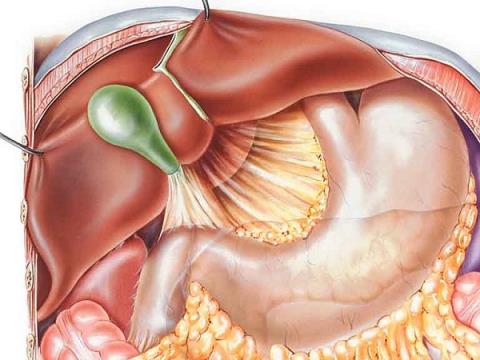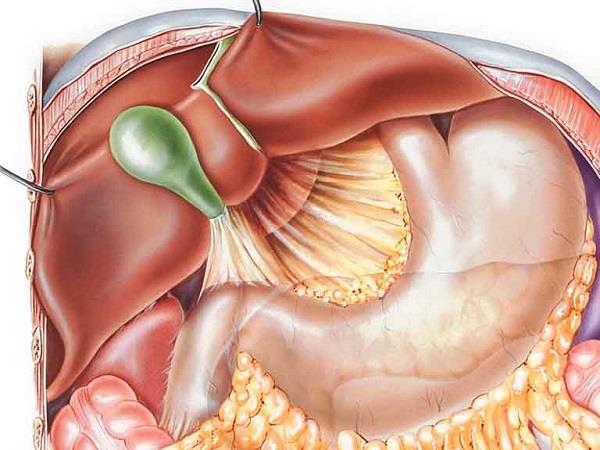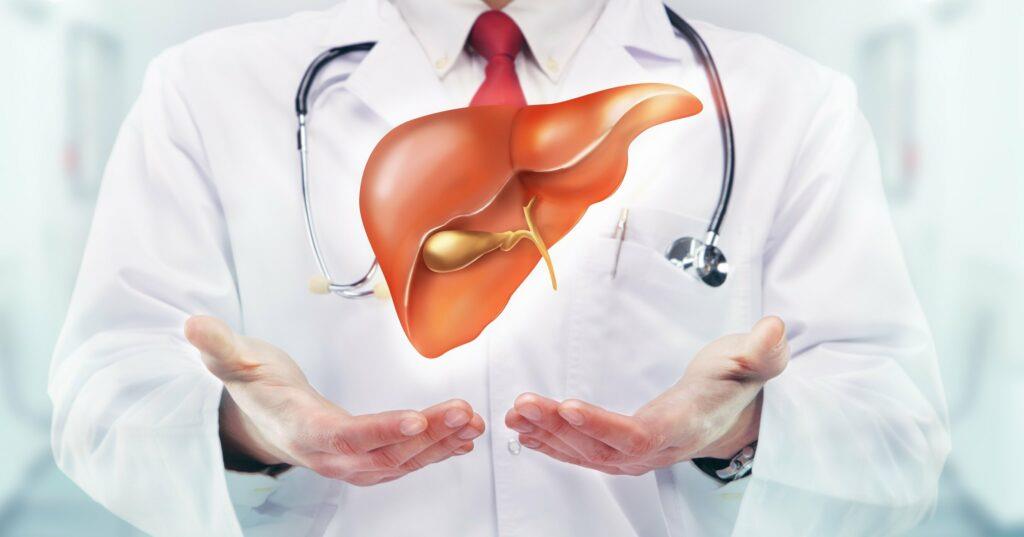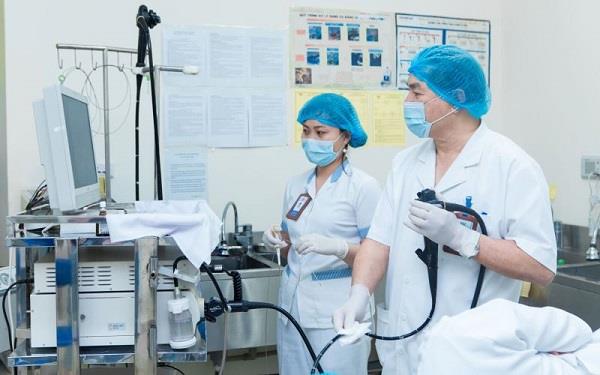Is Bile Reflux Gastroesophageal Reflux?

You are having digestive symptoms such as bloating, heartburn, heartburn. Or severe upper abdominal pain. You are trying to treat gastro-oesophageal reflux but not getting good results. Then it is possible that you are suffering from bile reflux disease. What is bile reflux? Is it different from gastroesophageal reflux? Below is an article that will give you basic information about bile and bile reflux.
content
1. Overview of bile and bile reflux
Bile is a greenish-yellow liquid that is essential for digesting fats and removing worn out red blood cells and some toxins from your body. Bile is produced in the liver and stored in the gallbladder.
Bile reflux occurs when bile backs up into the stomach. And in some cases, bile can back up into the esophagus.
Bile reflux can be accompanied by reflux of stomach acid into the esophagus. Gastroesophageal reflux disease can lead to gastroesophageal reflux disease (GERD). GERD can lead to esophageal tissue irritation and inflammation of the esophagus.
Bile reflux and gastroesophageal reflux disease are separate medical conditions. Whether bile reflux plays an important role in the development of GERD remains controversial. Bile is often suspected of contributing to GERD when patients respond unsatisfactorily to strong acid-suppressing drugs. But there is little evidence to determine the impact of bile reflux on humans in general and patients with GERD in particular.
Unlike gastroesophageal reflux, bile reflux cannot be completely controlled with changes in diet or lifestyle. Drug treatment is necessary. Or in severe cases, surgery is a required treatment.

The gallbladder is located below the liver and right next to the stomach, the opening of the gallbladder into the small intestine is right at the end of the stomach
2. Cause
Eating a meal containing even a small amount of fat signals the gallbladder. The gallbladder is responsible for releasing bile. Bile flows through two small tubes (cystic duct and common bile duct) into the upper part of the small intestine (duodenum).
2.1 Reflux of bile into the stomach
Food from the stomach passes through the pylorus valve before entering the duodenum and is mixed with bile here. The pyloric valve usually opens only slightly – enough to let about 3.5 ml of liquefied food pass through at a time. But not enough for digestive juices to back up into the stomach. In many cases of bile reflux, the valve does not close properly, and bile flows back into the stomach. This can lead to inflammation of the stomach lining (bile reflux gastritis).
2.2 Bile reflux into the esophagus
Bile and stomach acid can back up into the esophagus when one valve is different. The lower esophageal sphincter separates the esophagus and stomach. The valve usually opens just long enough to allow food to enter the stomach. But if the valve weakens or relaxes abnormally, bile and stomach acid can back up into the esophagus.
2.3 What leads to bile reflux?
Bile reflux can be caused by:
- Surgical complications. Gastric surgery, which involves removing all or part of the stomach due to an ulcer or cancer, is the cause of most bile reflux.
- Stomach ulcers. Peptic ulcers can narrow the pyloric valve so that it doesn't open enough to empty the stomach as quickly as it should. Food stagnation in the stomach can lead to increased stomach pressure and allow bile and stomach acid to back up into the esophagus.
- Gallbladder surgery (cholecystectomy). People who had their gallbladder removed had significantly more bile reflux than those who didn't have this surgery.
3. Symptoms
Bile reflux can be difficult to distinguish from gastroesophageal reflux. The signs and symptoms are similar and the two conditions can occur at the same time.
Signs and symptoms of bile reflux include:
- Pain in the upper abdomen (epigastric). The pain can be intense.
- Frequent heartburn, heartburn. A burning sensation in the chest sometimes spreads to the throat accompanied by a sour taste in the mouth.
- Nausea.
- Vomiting of greenish-yellow liquid (bile).
- Occasionally, cough or hoarseness.
- Unintentional weight loss.

When to see a doctor?
Make an appointment with your doctor if you regularly experience reflux symptoms. or if you are losing weight unintentionally.
If you've been diagnosed with GERD but aren't seeing relief with medication, call your doctor. You may need additional treatment for bile reflux.
Complications
Bile reflux gastritis is associated with gastric cancer. The combination of bile and acid reflux also increases the risk of the following complications:
- GERD. This condition is usually caused by an excess of acid. Although bile is involved, its importance in acid reflux remains controversial.
- Barrett's esophagus. This serious condition can occur when long-term exposure to stomach acid, or acids and bile, damages tissue in the lower esophagus. The cells of the esophagus are damaged and there is a higher risk of cancer. Animal studies have also shown that bile reflux is associated with the development of Barrett's esophagus.
- Stomach cancer. This form of cancer may not be diagnosed until it is quite advanced. The possible link between bile and acid reflux and esophageal cancer is controversial, but many experts believe there is a direct link. In animal studies, bile reflux alone has been shown to cause esophageal cancer.
4. Diagnosis
Based on your medical history and symptoms, your doctor can diagnose a reflux problem. But distinguishing between acid reflux and bile reflux is difficult and requires further testing. You may also have tests to check for damage to your esophagus and stomach. As well as precancerous changes in the esophagus and stomach.
Tests may include:
- Endoscopic. A thin, flexible tube with a camera (endoscope) is inserted into the throat and further down. Endoscopy can show ulcers or inflammation in the stomach and esophagus. Your doctor may also take a tissue sample for testing to rule out Barrett's esophagus or esophageal cancer.
- Acid test. These tests use an acid-measuring probe to determine when and for how long, acid backs up into your esophagus. During the test, a thin tube with a probe on the end is threaded through the nose into the esophagus. In another test (the Bravo test), a probe is attached to the lower part of the endoscope, which is placed in the lower part of the esophagus during endoscopy. These acid tests can help your doctor distinguish acid reflux from bile reflux.
- Esophageal impedance. This test helps determine whether gas or liquid is refluxing into the esophagus. It is useful for people who vomit non-acidic substances (such as bile). And bile cannot be detected by the acid probe. As in a standard exploratory test, esophageal impedance uses a probe that is placed into the esophagus with a catheter.

Gastrointestinal endoscopy is becoming popular
5. Treatment
Lifestyle modifications and medication can be very effective for GERD, but bile reflux is more difficult to treat. There is little evidence evaluating the effectiveness of treatments for bile reflux. This is partly because it is difficult to identify bile reflux as the cause of the symptoms.
5.1 Medical treatment
- Ursodeoxycholic acid. This medication helps to facilitate the flow of bile in the lumen of the bile duct and duodenum. It can reduce the frequency and severity of your symptoms.
- Proton pump inhibitors (PPIs). These medications are often prescribed to reduce acid production in the treatment of stomach ulcers. But its role in the treatment of bile reflux remains unclear.
- Bile acid sequestrants. Doctors often prescribe medications that sequester bile acids, disrupting the flow of bile. But studies show that these drugs are less effective than other treatments. Side effects, such as bloating, can be serious.
5.2 Surgical treatment
Doctors may recommend surgery if medication doesn't relieve severe symptoms. Or worse, detect precancerous changes in the stomach or esophagus. Each surgical method has its own pros and cons, as well as varying success rates. And also suitable for different patient subjects. So be sure to discuss it with your doctor before proceeding with surgery.
Here are the most common surgical methods, including:
- Redirection surgery (Roux-en-Y). This procedure, which is also a type of weight loss surgery, may be recommended for people who have had stomach surgery with a pylorectomy. In Roux-en-Y, surgeons make a new connection to guide bile down to the small intestine. To move the bile duct distal to the stomach.
- Fundoplication surgery. The portion of the stomach closest to the esophagus is wrapped and then sutured around the lower esophageal sphincter. This procedure strengthens the valve and can reduce acid reflux. There is little evidence for the effectiveness of surgery for bile reflux.
Bile reflux is often difficult to distinguish completely from gastroesophageal reflux. Because the symptoms and signs are quite similar. So, if you are treating gastroesophageal reflux but the effect is not high. You should discuss with your doctor the possibility of bile reflux. Leave a comment if you have any questions about bile reflux disease. Or contact your doctor directly for more specific advice.
Doctor Nguyen Van Huan